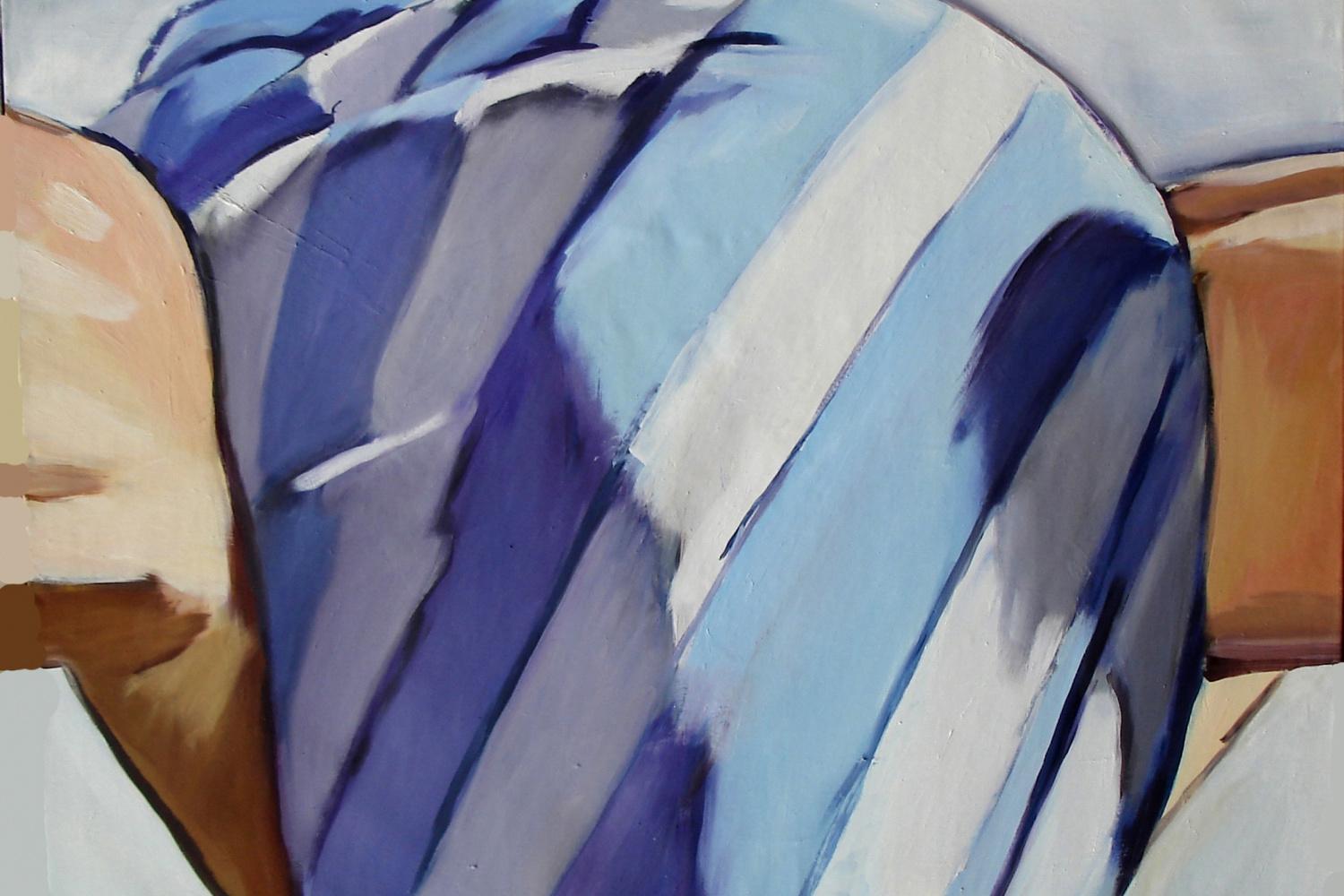
The main point of the project is clearly suggested by its title. First, it is just works, works of painting with their intrinsic value rather than an intellectual intrigue using them as a tool and requiring solution. Secondly, in his images the author doesn’t emphasizes separate objects but rather the process of working with them, even though the titles of all the three presented series relates to a certain (abstract or material) object of an effort of labor (“Purity”, 2005-06; “Lawn”, 2006-07, “Meat”, 2007).
A graduate, on the one hand, of Surikov Art Institute, with its traditionalist system of instruction in the skills of the craft, and, on the other hand, of the Research Institute of Contemporary Art with its taste for radical and conceptual strategies, Alexander Pogorzhelsky began his career as an author fitting well into the familiar format of the actualist art. However, he soon grew bored with the procedure of conceptual invention, much more so that the suddenly discovered space of the routine provided him with opportunities, though not so attractive, but, instead, infinitely more numerous and diverse. As a result, the “conceptualism” of the past was replaced by a realistic documentary approach, which can be exemplified by the creative effort of very few expectional authorов of the Moscow scene of the contemporary art. Among the latter we could name Olga Chernysheva or Dmitry Gutov, but unlike these fundamentally multimedial authors, Pogorzhelsky stays within the confines of the painting technique alone. It is the painting that guarantees him the communication of the eye with the hand and the brush, at the tip of which there emerges a faithful picture of the world. It is perceived by the artist as the only guarantee of the immediate contact with the reality, which is considerably weaker (if not altogether absent), where an artist uses intermediary technical tools (like photography or video) or media stories. Here the reality in question is clearly not everything open to the eye, but only the things personally assimilated, relating to private experience and everyday activities and work. All the rest is not sufficiently familiar, thus unreliable, as unreliable are things in and by themselves (ironically, it is almost a Kantian concept: things-in-themselves and things-for-us). That is why they also apper in Pogorzhelsky’s artwork only in that “impressionistic” form, in which they were scanned by a gaze absorbed by the process and cutting off everything suprafunctional, everything that is not involved in the work, and that is why they sometimes end up to be fragmented beyond recognition.
The mechanical “moving image” is forbidden here, yet, on the other hand, every one of the artist’s canvases represent a separate phase of the action, while their complete “assembly” is inevitably governed by the rules of video or movie montage. In the “Purity ” and the “Lawn” such montage forms a natural and accidental mosaic of instant glances (fragments of the author’s own face and body, grass and garden hoses, shower curtain or jets of water), while in the “Meat” it, on the contrary, constructs an illusion of a fixed gaze scanning the whole picture of the hands’ movement in the form of a linear sequence of “frames”. This is, probably, the real paradox of the “honest painting” in the times of the media: an artistic mind finds therein the much-desired opportunity for natural expression, however, such expression requires nearly ascetic self-restraint.
Vladimir Levashov